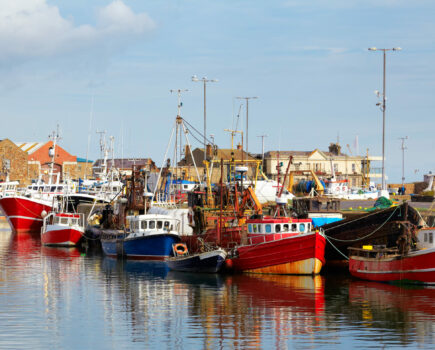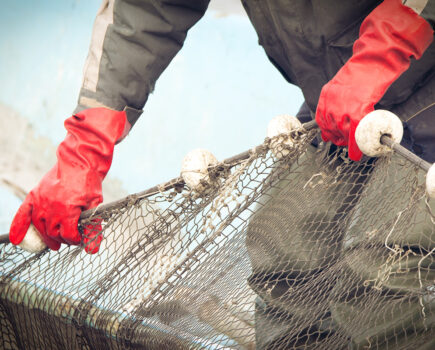MMO starts e-catch recording for under-10s: phase-in begins for England and Wales
The MMO has begun phasing in electronic catch recording for under-10m boats in England and Wales.
The roll-out of the new system has started, after the MMO worked with the fishing industry in a ‘soft launch’ period over the past few months.
“With months of testing and continuous feedback from volunteers who have been using the service day to day, we thought it would be best to share some of the best and most-asked questions to come out of our sessions with industry, and some tips on using the service they have found useful,” said Michael Coyle, head of compliance and control at the MMO.
Image: The new MMO app for e-catch recording for under-10m boats in England and Wales.
He said that e-catch recording will provide a better understanding of the catch of the English and Welsh under-10m fleet. “Better data gathering will also provide better scientific evidence and lead to better decision-making.”
He said that the question the MMO was asked most often was whether fishermen had to submit their catch records while at sea.
“The answer is ‘no’, except if you are crossing the line between areas 4c/7d (southern North Sea/eastern Channel) or 7d/7e (east and west Channel). In that case, you must submit a catch record for both ICES areas each time you leave/enter the area,” said the MMO control chief.
There had been a number of questions about digital accessibility and how this affects the catch recording service. Michael Coyle said: “If you don’t have access to the internet or a smartphone, you could be classed as assisted digital, and can then phone in your catch to the contact centre before landing. However, you would have to register with the contact centre as assisted digital.”
There are a number of other ways to record your catch, such as:
- You could telephone someone with access to your account to enter the catch online via the web before you land
- You could retain the catch onboard (although you can land the non-quota, non-catch-limit species), record the catch on a computer, then return to the vessel to land.
“However, having a smartphone to enter your catch is by far the easiest of all the options,” said Michael Coyle.
“If you have limited reading/writing ability and difficulty using technology, there is an assisted digital service that allows fishermen to ring the contact centre from a basic mobile phone (or landline for those who catch non-quota species).
“It is important to remember that the ‘record your catch’ mobile application works whether you have a signal or not. You will be able to record your catch when there is no signal, and this will automatically be sent when a phone signal is detected.”
He said the new service is going to change the way the fishing industry operates, making it more streamlined and easier for both industry and the MMO.
“We have been asked by industry to explain the changes that are going to affect them. You will not need to continue recording your shellfish catch using the MSAR1 form once you have started recording your catch using the electronic system – the new service will replace the MSAR1. You must complete and submit your current return up to the date of your first submission on the catch recording service.
“Similarly, if you complete a paper logbook – for example, when leasing quota – once you start recording your catch using the service, you will no longer be required to do so. Under-10m vessels with membership of a PO that currently complete logbooks will continue to do so.”
Non-active vessels do not have to sign up to the catch recording app, but if you do go fishing commercially after the applicable date in the licence condition, you will need to register and record your catches. This is similar for seasonal fishermen who cannot fish because of weather conditions for some weeks.
“You are not required to register if you are not fishing when you get the email invitation,” said Michael Coyle. “However, if you do go fishing commercially, after the applicable date in the licence condition, you will need to register and record your catches.”
SW leader: ‘Not needed or practical’
Under-10 e-catch reporting is seen as unnecessary, and yet another burden, by many hard-pressed small-boat fishermen.
One industry leader, Dave Pessell, managing director of Plymouth Trawler Agents (PTA), which handles the catches of many under-10s, said that they can catch as many as 25 different species per day, and that the system was being introduced by people with no understanding of the under-10 sector.
He told Fishing News (24 October, ‘State of play at Plymouth’): “The risk that these vessels pose with regard to non-compliance is minimal – yet the MMO has now decided that it would be a good idea for the skippers of these vessels to acquire a smartphone, if they don’t already have one.
“They should then proceed to some imaginary quiet harbour after a long and dangerous day at sea, enter up to 25 different species on their phones, and then enter the estimated weights of the 25 species, caught over two or three hauls, within an accuracy of 10% either way. They are then graciously granted permission to move to a landing berth and put their fish ashore.
“On a Sunday to Thursday basis, these catches are sold within 12 hours at auction, and a detailed sales note is duly forwarded to the MMO as a legal requirement. Obviously no risk assessment was made by anyone who had the slightest understanding of operating small trawlers in a mixed fishery.
“There is far more risk of the unprecedented number of MMO officers banging their hard hats together as they check whether there are 11 pouting, or nine pouting and two whiting, in the next box ashore.”
Tips on using the service
Set up all your favourites during registration
Adding your gear, ports and species ahead of time will make using the service quicker and more straightforward.
Weighing of fish
Exact weights are not required in the catch recording service – estimates of live weights within 10% are all that is required. This, again, makes it quicker and easier for you to use the service.
Weights with decimal places
Weights are estimated, so only whole numbers are valid. If you catch less than 1kg, you must round up to 1kg. Any weight above 1kg should be rounded to the nearest whole number – e.g. 3.2kg should be entered as 3kg, and 5.5kg should be entered as 6kg.
Unable to find species in system
The species list is based on catches in UK waters in the past 10 years. Species are recorded under the FAO standard – the name used may be different from the local name. For example:
- Grey mullet – Mullets nei (MUL)
- Red mullet – Surmullet (MUR)
- Lesser spotted dogfish – Small spotted catshark (SYC)








